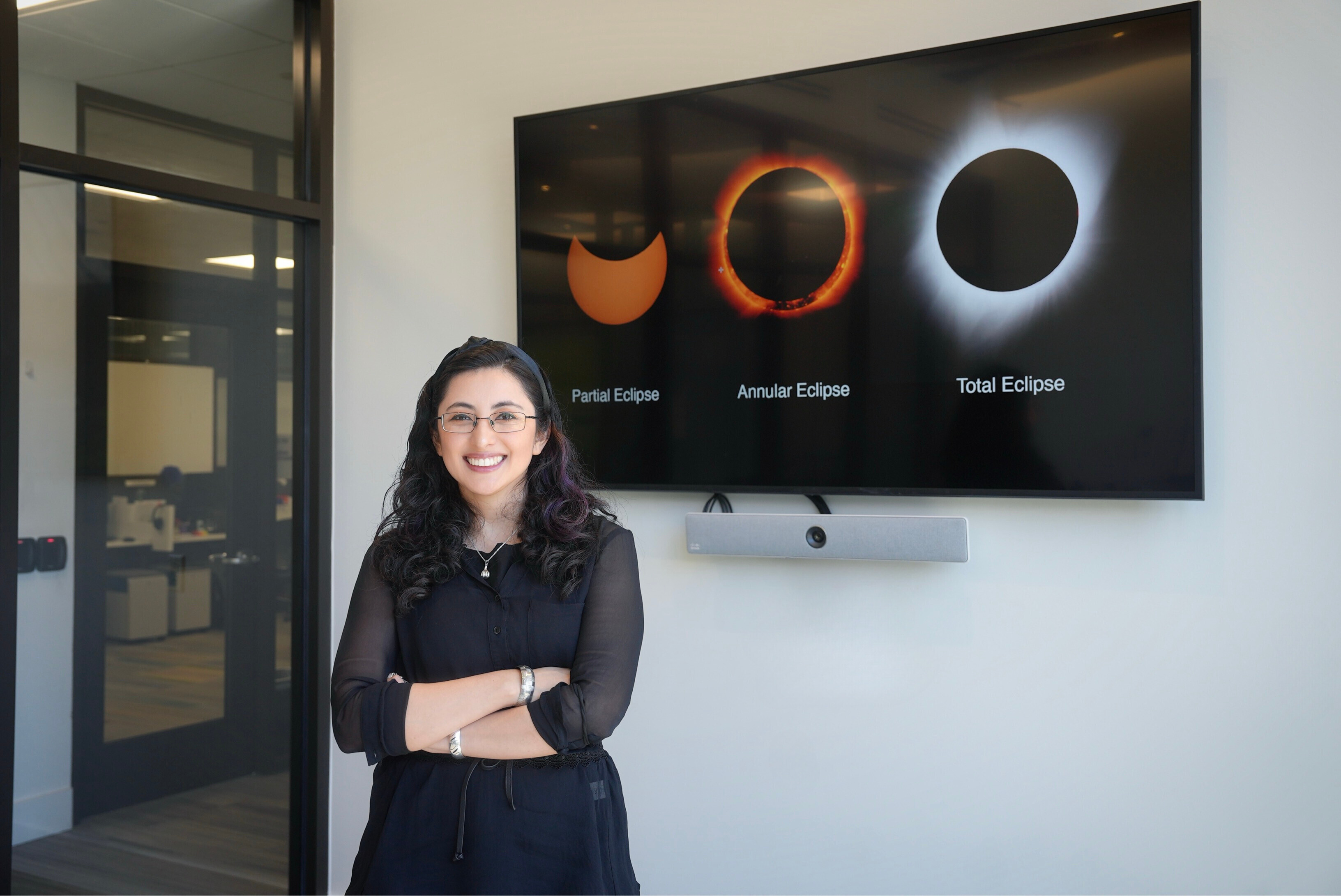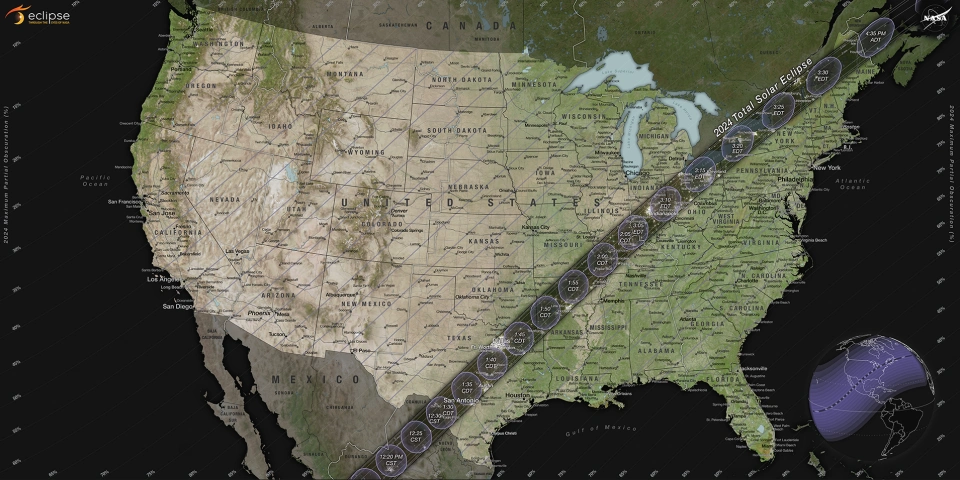
Dr. Liliana Rivera Sandoval, assistant professor of Astronomy at UTRGV, will participate in the live coverage of the solar eclipse on April 8, 2024. (UTRGV Photo by Jesus Alferez)
News Release | Community

Dr. Liliana Rivera Sandoval, assistant professor of Astronomy at UTRGV, will participate in the live coverage of the solar eclipse on April 8, 2024. (UTRGV Photo by Jesus Alferez)
Friday, April 5, 2024
Science and Technology, Happenings, Community
By Maria Gonzalez
RIO GRANDE VALLEY, TEXAS – APRIL 5, 2024 – Dr. Liliana Rivera Sandoval, assistant professor of astronomy at UTRGV, has been invited by the Exploratorium Museum – a museum of science, technology, and arts in San Francisco founded by physicist and educator Frank Oppenheimer – to lead a section in the live broadcast for the upcoming solar eclipse on April 8, from Junction, Texas.
Rivera Sandoval, a NASA award-winning astronomer, said she is excited about the opportunity to share this celestial event with a broad audience.
“In a solar eclipse, the Moon passes between the Sun and Earth, blocking our view of the Sun for a few minutes,” she said. “This alignment is so exciting because parts of North America will witness a total eclipse.”
The process of an eclipse is a “rare phenomenon to witness,” she said.
“The eclipse's path will cross México, the United States and, finally, Canada, offering a rare spectacle for those in the path of totality. For those outside this path, like the Rio Grande Valley (RGV), the event will still offer a partial view.
“From our area, we will only see about 90% of the Sun obscured,” she said.
She recalled how cloudy it was for the October 2023 eclipse, and expressed her hopes for clear skies this time.
She highlighted future noteworthy astronomical events.
“After April 8, the next total eclipse to cross the United States will occur in August 2044. Meanwhile, we have many astronomical events to look forward to each year, such as meteor showers and supermoons,” she said.
She specifically mentioned the annual Lyrid meteor shower, to be visible between April 15 and April 29 this year.
“This means you will be able to see several shooting stars in that period. The peak will be on the night of April 21, so you will see even more shooting stars,” she said.
Rivera Sandoval said she can’t wait to participate at the Exploratorium Museum.
“It's an honor to share my scientific knowledge and connect with the Museum's crew, exchanging professional experiences,” she said.
And she is especially enthusiastic about engaging with the Spanish-speaking community during the April 8 solar eclipse event.

Rivera Sandoval reinforced that need for eye safety for those planning to view the eclipse, and urged the use of certified solar viewing glasses or other safe viewing methods to protect the eyes.
“A partial eclipse, like the one visible from the RGV, should never be directly observed with the naked eye. Even at 90% coverage, the Sun remains bright enough to pose a risk of eye damage,” she said.
She offered alternatives for observing this eclipse.
“For those without special eclipse glasses, shade #14 welding glasses are a safe alternative. Alternatively, a simple pinhole projector can be made by poking a small hole in a piece of paper and using it to project the eclipse's image onto a surface for safe viewing. Household items like colanders or cheese graters can also serve as pinhole projectors, offering a unique way to observe the event.”
Dr. Can (John) Saygin, UTRGV Senior Vice President for Research and Dean of the Graduate College, invited the community to tune in to Rivera Sandoval’s broadcast.
“Her participation in this event underscores the quality of research and dedication at UTRGV,” he said. “We encourage our community to join in this educational opportunity, which showcases the fascinating aspects of our universe. It also emphasizes the importance of space sciences research at UTRGV.”
To view the upcoming livestream of the April 8 eclipse, visit https://www.exploratorium.edu/eclipse/livestream.
ABOUT UTRGV
The University of Texas Rio Grande Valley (UTRGV) was created by the Texas Legislature in 2013 as the first major public university of the 21st century in Texas. This transformative initiative provided the opportunity to expand educational opportunities in the Rio Grande Valley, including a new School of Medicine and a School of Podiatry, and made it possible for residents of the region to benefit from the Permanent University Fund – a public endowment contributing support to the University of Texas System and other institutions.
UTRGV has campuses and off-campus research and teaching sites throughout the Rio Grande Valley including Brownsville (formerly The University of Texas at Brownsville campus), Edinburg (formerly The University of Texas-Pan American campus), Harlingen, Weslaco, McAllen, Port Isabel, Rio Grande City and South Padre Island. UTRGV, a comprehensive academic institution, enrolled its first class in the fall of 2015; the School of Medicine welcomed its first class in the summer of 2016, and the School of Podiatric Medicine in the fall of 2022.